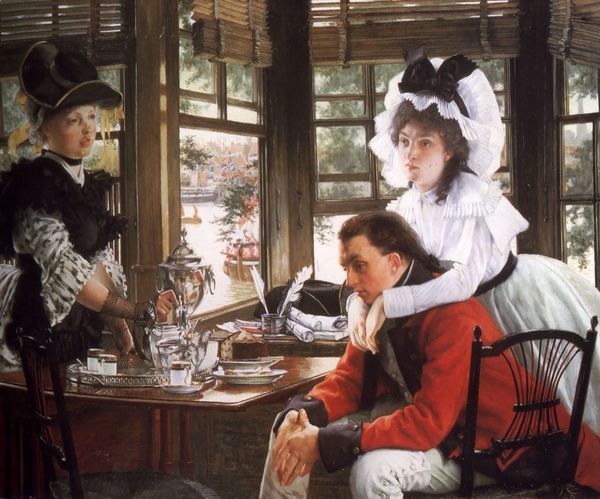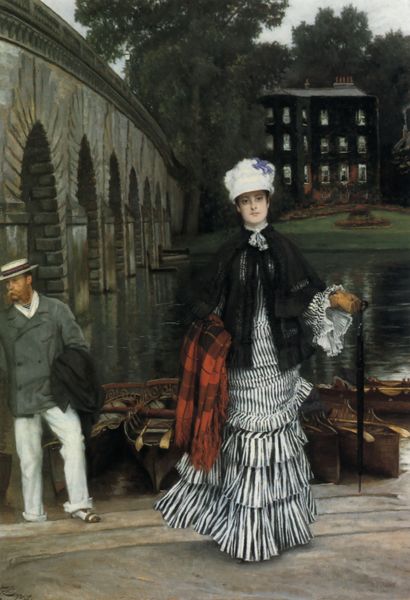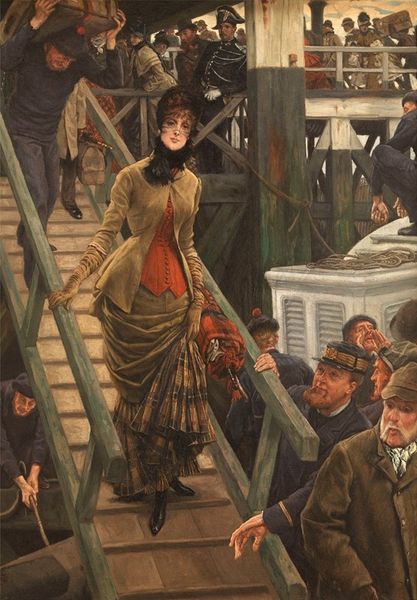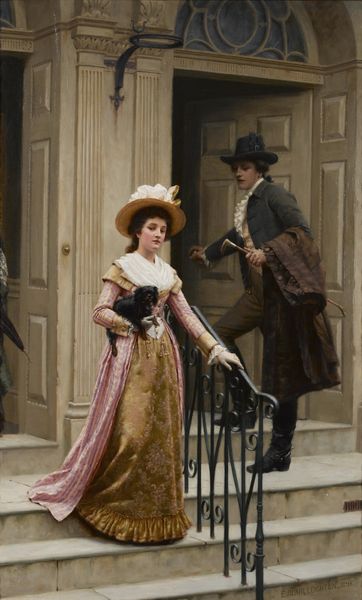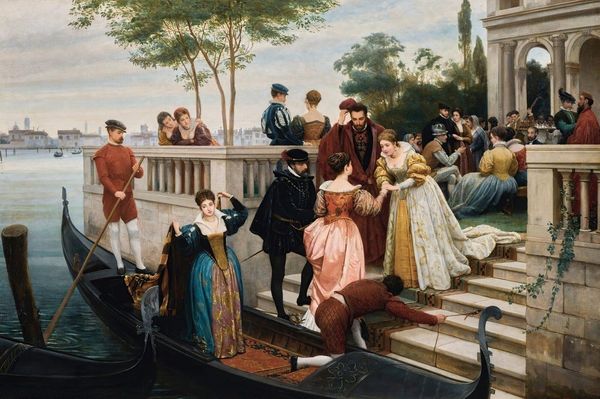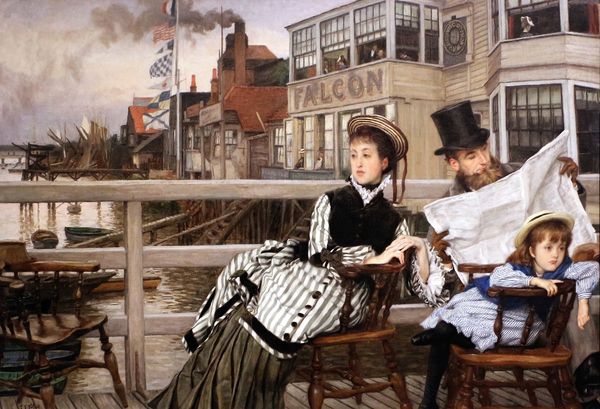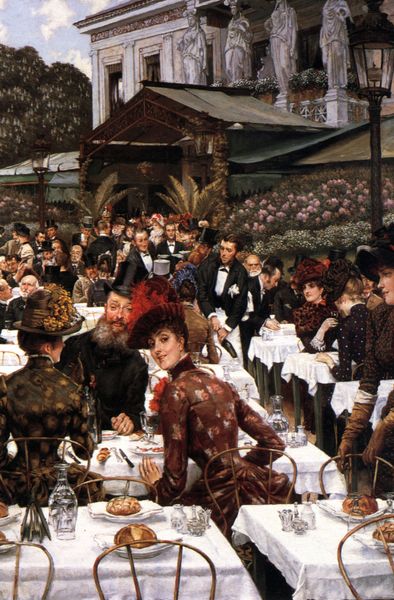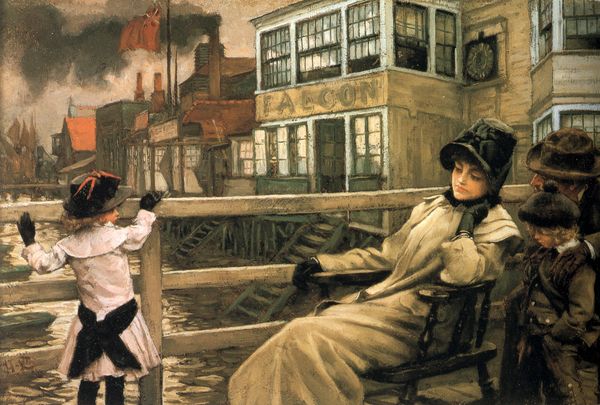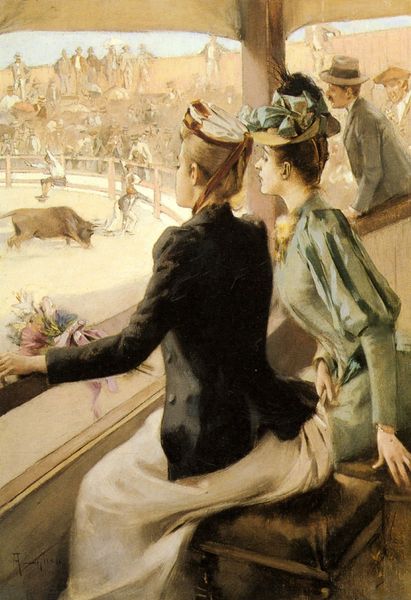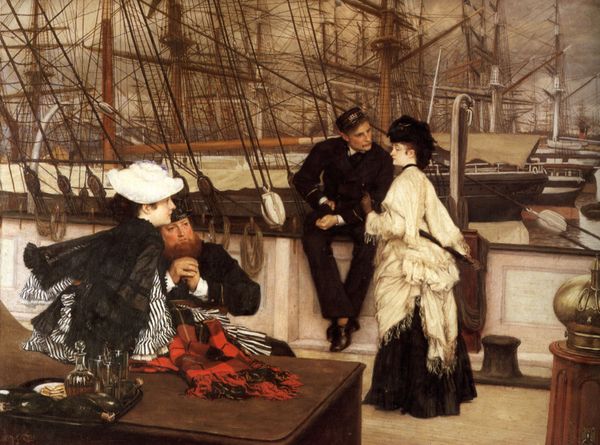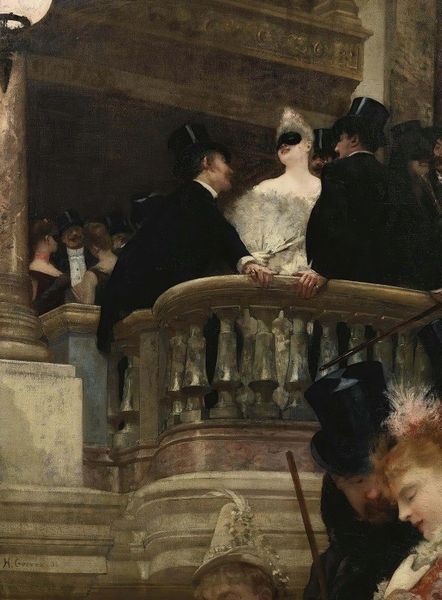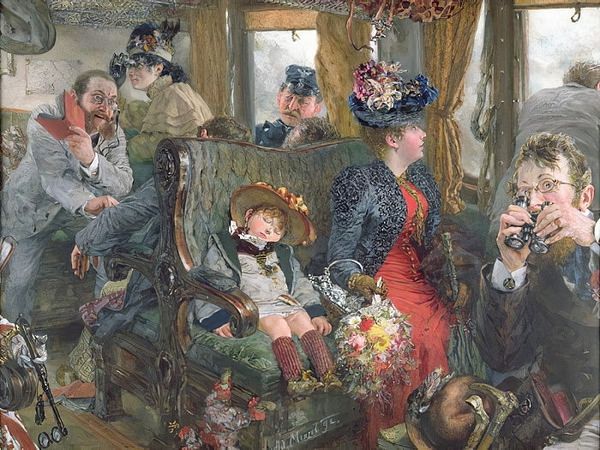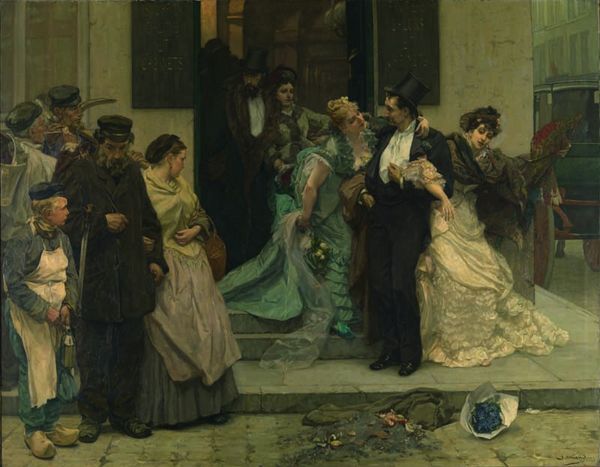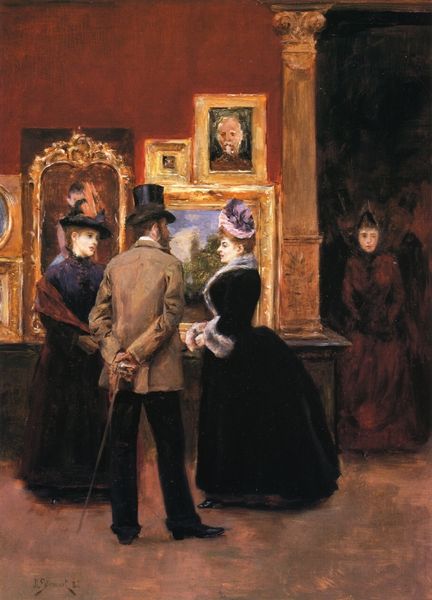
Copyright: Public domain
Curator: James Tissot’s "The Traveller," painted in 1885 with oils, plunges us into a moment of bustling Parisian street life. What strikes you first about this snapshot of a bygone era? Editor: Immediately, the formality amidst the ordinary grabs me. There's an intimate farewell happening right at the carriage, yet it’s staged against a backdrop of the everyday – a paperboy, onlookers… it feels intentionally performative. Curator: Absolutely. Tissot excelled at capturing these sorts of ambiguous narratives. We’re privy to this fleeting, potentially dramatic moment, but the true story remains wonderfully out of reach. I wonder what dreams she carries? Editor: Perhaps the "traveller" in the title speaks not just to her literal journey but to her journey through societal expectations. Women's roles were so tightly circumscribed, and here she is, stepping – or being placed – into this luxurious vehicle, representing a certain class mobility. It feels… loaded. Curator: You've hit on something resonant. Consider also the light. Tissot’s use of soft, diffused light creates such a sense of dreamy atmosphere and muted emotionality, all while maintaining incredible detail, particularly in the woman’s fabulous periwinkle confection. Editor: That dress is absolutely a symbol. The layers upon layers of fabric, the elaborate bustle…it signifies status, wealth, and also the restrictions placed upon her physical movement. Corseted both literally and figuratively. The child, too. Does his gaze symbolize the end of the old class values? Curator: Maybe. It could also be pure youthful curiosity, right? Sometimes I resist assigning totalising doom-and-gloom readings. Even the most visually restrictive garments could spark joy in being worn; maybe her beauty makes our subject feel safe in the street’s hostile confines? Editor: That's the tightrope Tissot walks so well, isn’t it? Holding the space for individual emotion within these rigid social structures. But even your reflection serves to illustrate the lack of liberation available to our subject. Curator: A fair point. I think it also reveals a quiet defiance present among his characters – especially the women. They navigate societal expectations with a knowingness in their eye; their actions were, as your reflections point out, performative – for one another as much as any external male gaze. Editor: Absolutely. These glimpses into ordinary 19th-century existences offer such rich potential for peeling back layers of identity. This painting speaks to the complexity of that particular point in history; an exciting space to explore. Curator: Indeed. And sometimes, just sometimes, it hints that a stylish exit can offer as many adventures as a journey.
Comments
No comments
Be the first to comment and join the conversation on the ultimate creative platform.
